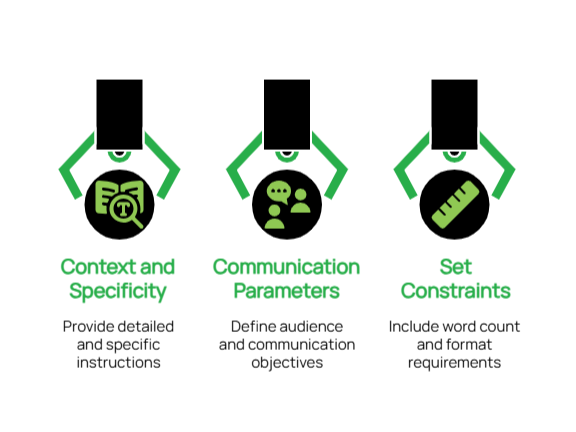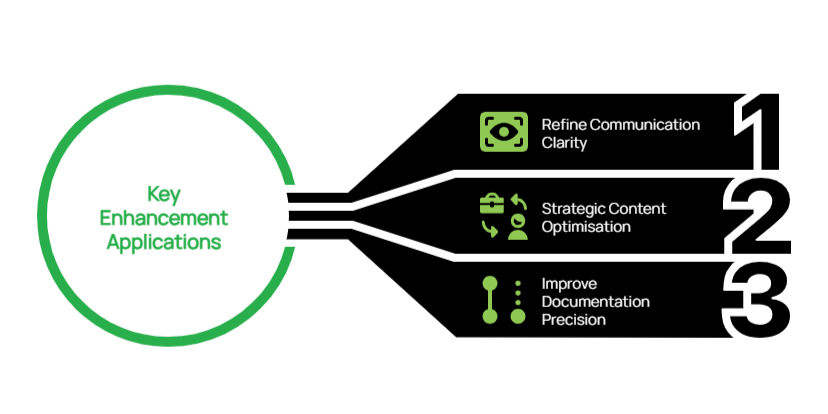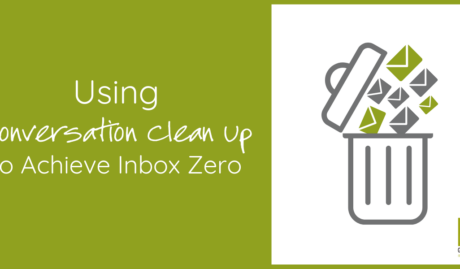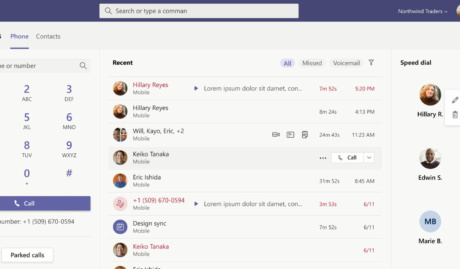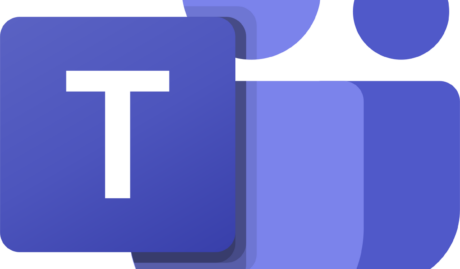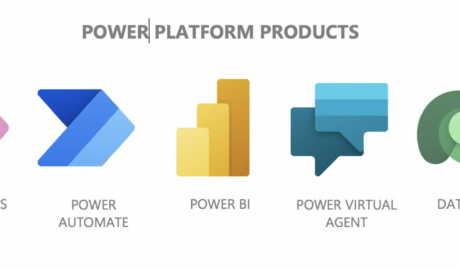“Is this AI thing actually worth our time, energy and investment?” It’s a question we hear from business leaders when evaluating Microsoft Copilot. The answer isn’t about chasing the latest trend—it’s about identifying where Copilot delivers genuine business value.
When used strategically, Microsoft Copilot unlocks far more than productivity—it becomes a catalyst for innovation and growth.
As technology advisors, we’ve identified three practical ways to use Copilot that help teams work smarter, communicate better, and drive meaningful results.
1.Crafting Strategic Prompts for Targeted Outcomes
The foundation of effective Copilot utilisation lies in developing clear, purposeful instructions. When your prompts lack precision, the resulting output may fall short of your expectations.
Best Practices for Business-Focused Prompts:
- Provide Context and Specificity: Rather than requesting “write a business email,” specify “create an email announcing our upcoming system maintenance to clients, explain the benefits and include a timeline of what to expect”.
- Define Communication Parameters: Clearly state your intended audience and purpose. For example, “Draft an email to our team explaining the new project management software, focusing on how it simplifies collaboration and what they need to do before launch day”.
- Set Appropriate Constraints: Include practical parameters such as word count limits or specific formats that align with your business needs.
Real-World Applications:
A Non-Profit Organisations: Prompt: “Use Microsoft Copilot to build a checklist in Microsoft 365 that automates thank-you emails to donors. Include steps to personalise messages based on donation amount, connect with our donor database (e.g., Excel or Dynamics 365), and add tracking to measure email engagement like open and click rates.“
Why it works:
This prompt clearly tells Copilot what to automate, how to personalise, and what metrics to track — all within tools non-profits already use.
An Engineering Firm: Prompt: “Write a procedure using Copilot to pull out key specifications from technical documents. Ask it to keep all measurements accurate, highlight any important compliance rules, and point out possible design issues.”
Why it works:
Engineers can quickly get the info they need without missing critical details, helping projects move faster and safer.”
A Medical Practices: Prompt: “Create a Copilot template that turns complex medical procedures into easy-to-read patient handouts. Ask it to keep all medical facts accurate but explain them in plain language that patients can understand.”
Why it works:
Patients feel more informed and confident, and staff spend less time rewriting the same explanations.
This foundation of precise, context-rich prompting transforms Copilot from a generic assistant into a strategic partner that understands your specific industry requirements and delivers consistently relevant results.
2. Develop an Iterative Collaboration Strategy
Think of Copilot as a collaborative partner rather than a one-time tool. By having back-and-forth conversations with it, you’ll refine your ideas and create better content.
Effective Collaboration Techniques:
- Refine Content Progressively: When initial output needs improvement, guide Copilot with specific feedback: “Simplify this explanation and use more straightforward language that non-technical users can easily understand.”
- Generate Alternative Approaches: Explore different options by asking: “Show me three different ways we could structure this quarterly business review presentation for our board members.”
- Deepen Analysis: Enhance your documentation with prompts like: “Expand this section to include specific regulatory requirements that apply to our industry and how our solution addresses each one.” For accuracy, you might paste the regulatory requirements sourced from a reliable directory straight into the tool.
Practical Examples:
For Service-Based Businesses (consulting, healthcare, professional services):
Initial Request: “Draft an email template reminding clients about their upcoming appointments.”
Follow-up Refinement: “Revise the template to include a brief explanation of how coming prepared benefits them and what documents they should bring.”
Final Enhancement: “Add a friendly section about our rescheduling policy that emphasises flexibility while reducing last-minute cancellations.”
For Project Documentation:
Initial Request: “Create an outline for our monthly project status report.”
Follow-up Refinement: “Expand the ‘Challenges’ section to include more thoughtful questions about resource allocation.”
Final Enhancement: “Add a forward-looking section that helps team members anticipate next month’s priorities based on current progress.”
This collaborative methodology ensures that your initial ideas evolve into polished, professional communications that align with your strategic objectives and resonate with your intended audience.
3. Elevate Existing Business Documentation and Communications with Seamless Copilot Integration
One of Copilot’s most valuable capabilities is its ability to optimise your existing content, ensuring clarity, consistency, and strategic alignment across all business communications.
Key Enhancement Applications:
- Refine Communication Clarity: Request improvements to technical documentation with instructions like “Simplify this network assessment report for our client’s leadership team while preserving the essential technical findings”
- Strategic Content Optimisation: When updating client-facing materials, specify “Revise this managed services overview to emphasise business continuity benefits and long-term value rather than just technical specifications”
- Improve Documentation Precision: Enhance operational documentation with requests such as “Review this disaster recovery plan for clarity, completeness, and actionable steps for non-technical users”
Demonstrated Value:
For Non-Profit Leadership: Original Content: “Here’s the volunteer schedule for next month.”
Enhancement Prompt: “Improve this schedule with a more engaging introduction paragraph that thanks our volunteers and explains how their time contributes to our mission.”
Enhanced Output: “Thank You for Your Dedication! This schedule represents more than just dates and times—it’s a roadmap for community impact. Each shift you serve directly supports our mission to improve literacy rates in underserved communities. We’ve highlighted key events where your participation will make an exceptional difference.”
For Project Management: Original Content: “Here’s the technical specification document for the project.”
Enhancement Prompt: “Add a brief executive summary at the beginning that explains the business benefits in non-technical language.”
Enhanced Output: “Executive Summary: This project aims to significantly decrease customer wait times while also reducing operational costs. The technical improvements outlined in this document directly address the key customer pain points identified in our recent satisfaction survey, without requiring additional staffing resources.”
By systematically enhancing existing content, you can leverage these assets more effectively, ensuring every document serves both immediate operational needs and broader strategic communication goals.
Leveraging Copilot as a Strategic Business Asset
For forward-thinking organisations, Copilot represents more than just a productivity tool—it’s a strategic asset that can transform how you develop solutions, communicate with stakeholders, and scale your business operations:
- Save Time: Create documents, emails, and presentations faster without sacrificing quality
- Improve Communication: Generate clearer explanations of complex topics for different audiences
- Focus on What Matters: Spend less time drafting and editing, and more time on strategic work. When implemented with clear purpose and strategy, Copilot becomes a powerful extension of your team’s capabilities, enabling more informed decisions and enhancing your ability to deliver exceptional value to clients.
Taking the Next Step: Strategic Implementation
Mastering these approaches to Copilot usage can significantly enhance your team’s productivity while ensuring consistent, high-quality output across all business activities.
If you’re interested in exploring how Copilot can be integrated into your broader technology strategy, our team is available to help you determine your Copilot readiness aligned with your business objectives and growth plans.

